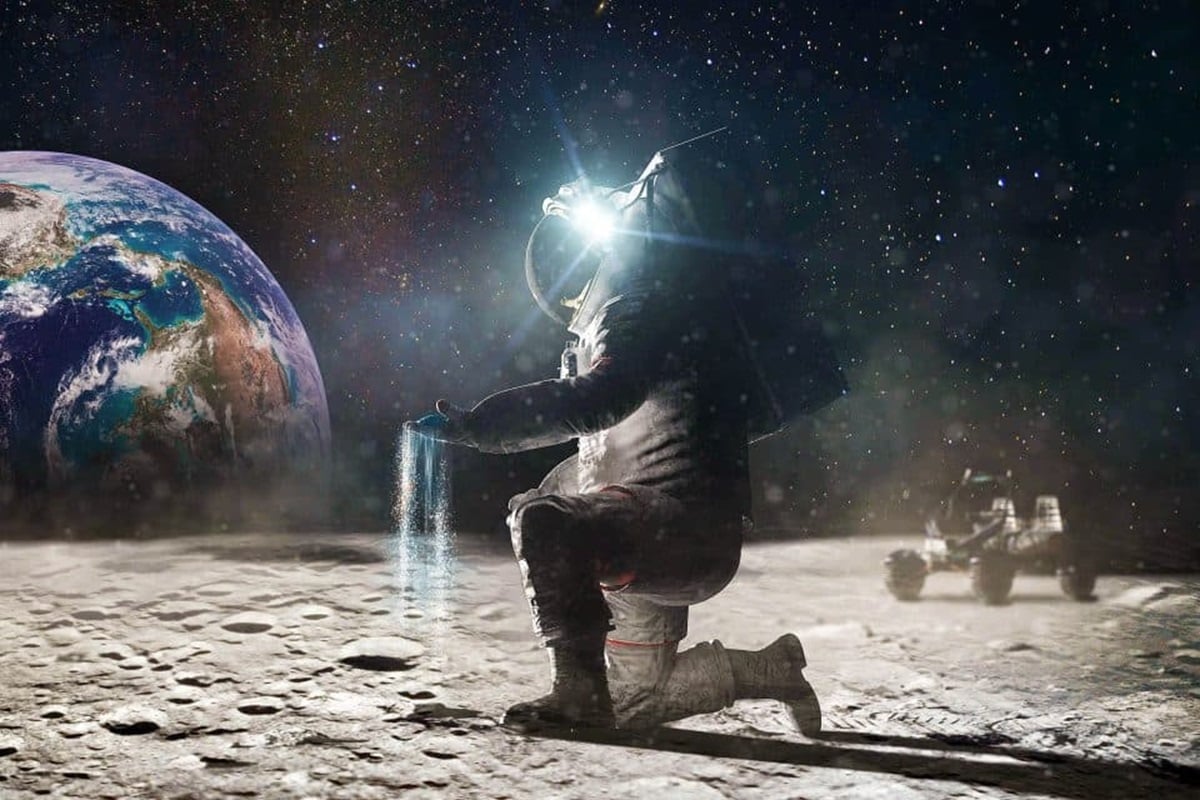
Researchers are diligently unraveling the complexities of lunar living, and one critical challenge lies in sourcing building materials. Transporting supplies from Earth is prohibitively expensive and inefficient. Enter lunar regolith—the moon’s top layer of soil and dust—as a potential solution.
Innovative Solutions with Moon Soil: A team from the University of Waterloo’s Laboratory for Emerging Energy Research (LEER) is pioneering a groundbreaking approach. Their goal? To process lunar regolith into usable materials for life support, energy generation, and construction.
- The Oxygen-Rich Regolith: Lunar regolith contains metallic dust infused with oxygen. This inherent oxygen content allows for a unique application: producing thermal energy through a thermite reaction. In space, where atmospheric oxygen is scarce, this becomes a game-changer.
- Thermite Reaction: The LEER team synthesized simulant “lunar” regolith, mimicking the moon’s composition. They experimented with various fuel and oxidizer compositions, controlling the energy release rate in a space-based thermite reaction. The result? A viable way to harness the moon’s topsoil for lunar development.
- Recycling Space Debris: But that’s not all. The team also addresses the menace of space debris—fast-moving fragments that threaten space missions. By recycling defunct satellite material, they create a fuel source for space development. These salvaged materials, when combined with lunar regolith, generate heat through thermite reactions.
The LEER team’s work transcends imagination. Their vision extends beyond the moon, aiming to build sustainable human settlements on other celestial bodies. Here’s how their research impacts our cosmic future:
- 3D Printing on the Moon:
- Lunar regolith could revolutionize construction. Imagine 3D printers fabricating intricate structures using moon soil as raw material. This on-site manufacturing minimizes reliance on Earth-bound supplies.
- Mars Missions and Beyond:
- Techniques honed on the moon may find applications on Mars. Regolith processing methods could aid Martian infrastructure and life support systems.
- Scientific Insights:
- Lunar soil holds clues about the moon’s history and the solar system’s evolution. Its unique composition offers a window into ancient cosmic processes.
- International Cooperation:
- Leveraging lunar resources fosters global collaboration. Joint missions unite countries and space agencies, pooling expertise for humanity’s interplanetary journey.
As the LEER team turns science fiction into reality, they pave the way for sustainable lunar living. Through innovative resource utilization and space debris recycling, they propel humanity toward a cosmic destiny—one where the moon isn’t just a distant orb, but a thriving outpost in our celestial neighborhood.
Leave a Reply